Many entries in this collective blog about the nature of cities will focus your attention on the nature that remains in cities, defined in terms of those patches of semi-natural habitat, the green bits, which are found in all cities, and which can be encouraged or discouraged by human action. Consider for example Celicia Herzog’s recent post delighting in the green landscapes in and around Rio de Janiero, connecting fragments of the famously-biodiverse Atlantic Forest in which Rio is emplaced. Or consider Mike Houck’s paean to the nature nearby, and within, Portland, Oregon, where his organization seeks to make Pacific Northwest cities both livable and loveable for people and other critters. Lovely pieces both, well worth your time.
I want to write about something related, but different, something which I think is both more encompassing and less well understood: that is, the total nature of cities. I want us to conceive of cities in their entirety as ecological places (more precisely, as ecological landscapes), where buildings, streets, boardwalks, sidewalks and parking lots, ball fields, basketball courts, fountains, and power plants, as well as the green bits, participate in a complex and evolving mosaic, where natural things happen. By nature I mean the interactions of soil and rock, air and water, energy and life, that characterize our verdant planet, and by natural, I mean the qualities of everyone and everything that participates in the great congress of life on Earth, including you and me. Those interactions and those qualities do not disappear when we build a city. Rather they take on new, idiosyncratic forms, which contrast in many, ordinary and extraordinary ways, with the ecological mosaics that formerly filled the place where the city now stands.
For example consider the fascinating work from Nova Scotia, where Jeremy Lundholm and his team surveyed the plants living in the cracks of sidewalks, the edges of the lawns, and other corners of the city of Halifax, and then traced back those plants, which most of us would think only as weeds, to the ecological niches where they were originally found in the world. They found that Halifax city plants have affinities with species that normally inhabit cliffs and talus slopes, and less commonly, grasslands and floodplains. Sidewalks are, from these plants’ perspective, a cliff on its side.
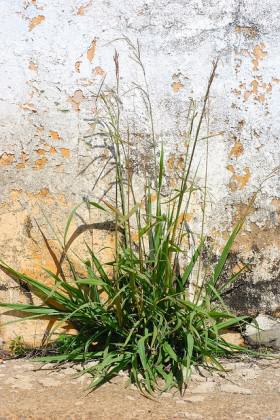
Lundholm’s open-minded inquiries are on to something: can we read an urban landscape “naturally”? Perhaps with analogues we can. Let’s let tall buildings stand in for cliffy hills, notice how gutters guide bubbling streams during a storm, observe sidewalks as animal trails with regular patterns of use in morning and evening. Let’s talk about the evaporation coming out of grates on a cold Manhattan morning in the same breath as the evapotranspiration from trees on a summer afternoon, for both flows are part of a hydrological cycle returning rain water from the ground to the atmosphere. Let’s find out how biological matter passes through an ecosystem, whether that biomass is measured in leaves falling from a tree, or sandwiches passing through the deli door. The nature of cities requires us to broaden our sense of what nature is.
Of course part of what we are broadening to include is us. In ancient texts, nature was commonly contrasted with artifice: artifice is what people create; nature is what is created without us. What a terrible notion! Terrible on two counts. Terrible on the first count, because it suggests an equivalency, as if one species (people) were somehow equivalent in creative powers to everything else on Earth, an idea ludicrous and arrogant, no matter how much we may delight privately in our own inventions. Terrible on the second count, because it suggests a sundering, a division of us from our world. Rather than seeing us as participants in the network of life, which we manifestly are, we instead imagine we are removed and separate. Much havoc has been wreaked on the backs of these misconceptions, with not the least of the mayhem originating from cities.
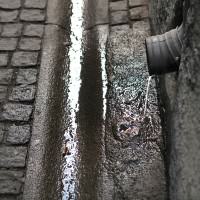
Credit: Bengt Nyman from Wikipedia.org: http://en.wikipedia.org/wiki/File:Street_gutter_in_Old_Town_Stockholm.jpg
So let us reconceive. What are cities? Cities are constructed habitat for people. Most species in nature come to an environment with whatever skills and characteristics their evolutionary history has provided them with and then they try to fit in. How well they do, whether they survive, depends on how well-suited they are to the new conditions. Cliff plants do well in sidewalks because they are pre-adapted to living in tight places. The human trick is instead of adapting to the environment, we change the environment to adapt to us. Too cold in winter? Build a building and close the window. Not enough food? Domesticate plants and animals and grow a garden. Water levels uncertain? Construct a dam and an aqueduct.
How are we able to do these things? Because our evolutionary gifts are large and flexible minds, an admirable ability to communicate in language, expression, and deed, and an affinity for each other: we are social like few animals have ever been. Because of these gifts, I can conceive of yesterday and contrast it with today; I can imagine different futures; and I can communicate my ideas with you, through this blog. If you find those ideas have merit, then we can work together to change the environment to match our conception of it. We can even, if we try, change our conceptions to match the environment.
And so we get to the nub of it: the nature of cities. Cities are ecological places, but have rarely been conceived in those terms, despite a history nearly 10,000 years in the making. Perhaps this will be our 21st century contribution to the notion of urban life: that cities are not only places of art, culture, communication, finance, business, science, religion, politics, and economy, but cities are also places for and from and of nature, cities of nature, nature with us in it.
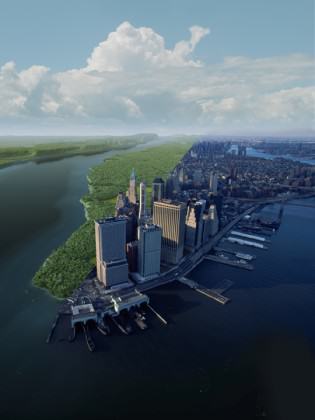
Credit: Markley Boyer / The Mannahatta Project / Wildlife Conservation Society; Yann-Arthus Bertrand / CORBIS. Originally published in Eric Sanderson’s Mannahatta: A Natural History of New York City (Abrams, 2009): http://www.nytimes.com/2009/05/24/books/review/Sullivan-t.html
About the Writer:
Eric Sanderson
Eric Sanderson is a Senior Conservation Ecologist at the Wildlife Conservation Society, and the author of Mannahatta: A Natural History of New York City.

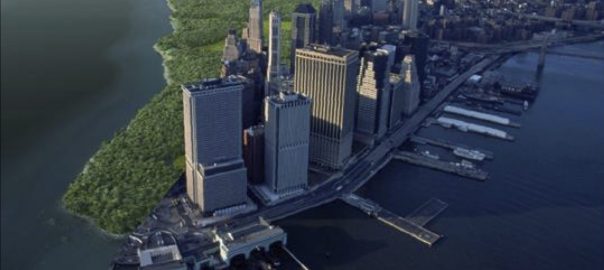


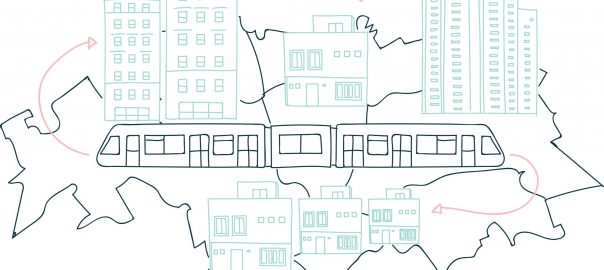
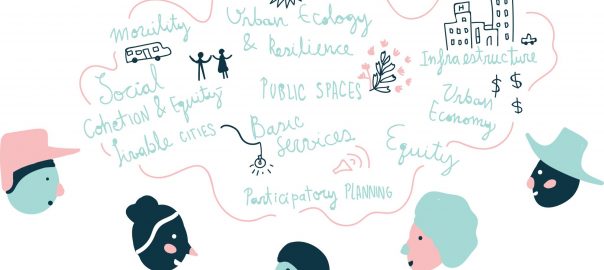
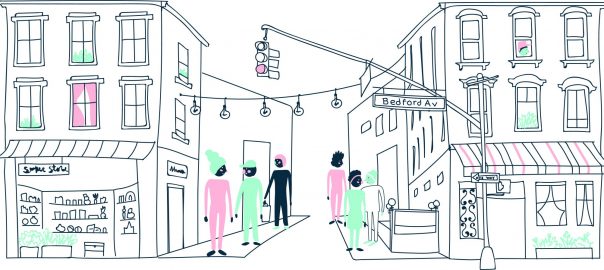
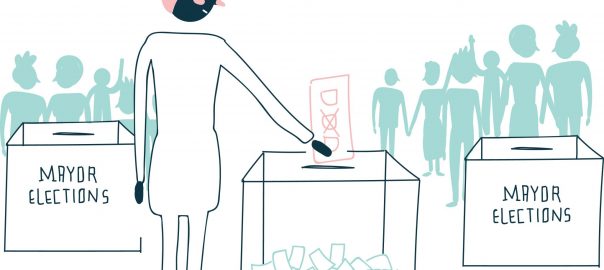
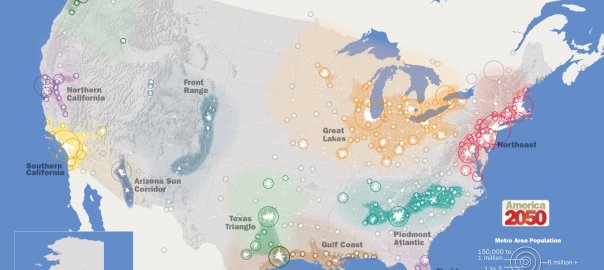

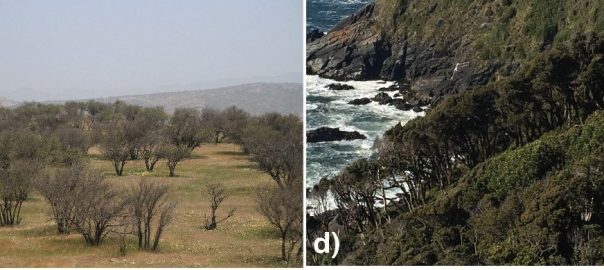
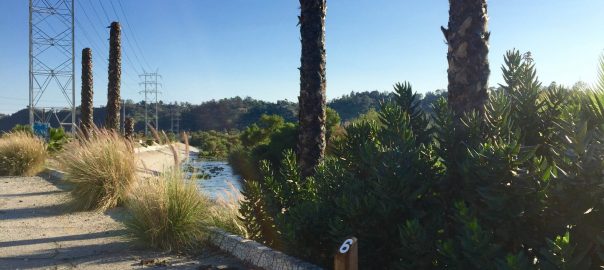
Conventionally, the City and Nature are thought to be very different and separate. Urban Political Ecology, Justice, and Politics of Scale suggest that this is not so. My question is: How might the City and Nature be more connected and intertwined than we might think?
Eric, I really like your “omnibus reply,” especially your further explanation “about how we frame the human relationship to the rest of nature” and our species’ role as a “keystone node.” I also like your description of what urban ecologists (and nature writers) need to do, namely “to show the world the ecological community of the city and show how people belong to the communities of where they live, so they they may begin to use the city with the love, respect, creativity, and power that is the special providence of all human beings.” Indeed.
And thanks for your reply to my comments. I absolutely agree that the duality of nature and humanity “has outlived its usefulness.” I too see hopeful signs but we humans have a LONG way to go. I hope you’re right that a century from now, “historians of the city” (specifically NY or more broadly?) will be writing about “this reinvention of urban life.” My worry is that they’ll be writing about other, larger stories, tied to the mess we humans are making around the world, in cities and beyond . . .
Thanks everyone for your comments on my post. I’m very glad it has aroused some interest. And apologies for the omnibus reply.
To Cecilia, I want to thank you for your work in Rio, and like you acclaim David for creating this forum for sharing our thoughts, aspirations, and dilemmas.
To David, I think the core of the my post is about how we frame the human relationship to the rest of nature. I do that by thinking of networks. Human beings are one node in the vast network of ecological relationships. We are manifestly part of nature. However our node is also a powerful one, a keystone node, in that we affect the other nodes in the network far out of proportion of our numbers, even though our numbers are so large. Ecology, and particularly urban ecology, is critical for demonstrating both our smallness (one node among many, highly dependent on the world around us) and our largeness (our ability to build, to dream, and either wreak havoc or generate beauty.) Ecologists have the ability through our studies to show what the network looks like from the perspective of other nodes in the network, whether they be other species or non-living parts of the environment, but we always do our work because we are shaping how people, see, understand, and construct the network around them.
So what would I have *us* all do differently? I take my lead from Aldo Leopold, who wrote in the Sand County Almanac:
We abuse land because we regard it as a commodity belonging to us. When we see land as a community to which we belong, we may begin to use it with love and respect.
I want urban ecologist to show the world the ecological community of the city and show how people belong to the communities of where they live, so they they may begin to use the city with the love, respect, creativity, and power that is the special providence of all human beings.
To Maria, I would say no doubt the Europeans are far ahead of people in other parts of the world, but also I would say, respectfully, there is still work to do, which leads of course…
To Bill, yes, you’re right, we are bucking a tradition at least 10,000 years in the making, indeed one of the central strands of Western thinking has been the duality of nature and humanity. Moreover, as you rightly note, it is alive and well today. However it is a distinction that has outlived its usefulness; this duality, this thesis and antithesis, is due for a synthesis, and I feel like it’s happening now, at least in New York. People used to come to the New York because they wanted to get away from where they came from and recreate themselves fresh, and maybe that is still true, but now part of the way they create themselves in New York City is by going to the farmer’s market or growing their own garden; by birdwatching in Central Park or going swimming at Coney Island; by caring about the energy efficiency of their building and the quality of the city’s watershed. I believe that 100 years from now, when historians of the city write about our time, they will not be writing about the latest architectural wonders or the newest fashion, but rather about this reinvention of the urban life, closer to and more aware of, the nature of cities, and all the new architecture, fashion, art, culture, and indeed science, that will spring from it.
From Eric’s part of the world: an excellent story in the NY Times about urban nature and restoration efforts in and along the Bronx River: “River of Hope in the Bronx.” The link is http://www.nytimes.com/2012/07/22/arts/design/bronx-river-now-flows-by-parks.html?pagewanted=1&nl=todaysheadlines&emc=edit_th_20120722
In thinking about Eric’s essay I stumbled into this book, which is a collection of essays from 1999 that to some extent address Eric’s theme. It is mostly socio-political and lacks much of anything about architecture and design, or even biology, but I found it interesting:
The Nature of Cities: Ecocriticism and Urban Environments, by Michael Bennett
http://www.uapress.arizona.edu/Books/bid1277.htm
“Cities are often thought to be separate from nature, but recent trends in ecocriticism demand that we consider them as part of the total environment. This new collection of essays sharpens the focus on the nature of cities by exploring the facets of an urban ecocriticism, by reminding city dwellers of their place in ecosystems, and by emphasizing the importance of this connection in understanding urban life and culture. The editors—both raised in small towns but now living in major urban areas—are especially concerned with the sociopolitical construction of all environments, both natural and manmade…”
Thanks for a provocative posting, Eric. There’s lots to mull over and I’ll only touch on a few points here. I like your idea that “cities are also places for and from and of nature, cities of nature, nature with us in it.” Of course that’s true, if we consider humans to be part of nature. But I think it’s going to take considerable time and effort to get most people (at least in the U.S.) to consider cities being part of nature, perhaps because of our long history of thinking/believing otherwise. Cities (as you well know) have for centuries been places to escape from wild nature (or wilderness), or hold nature at bay, or even improve upon nature.
While the distinction between nature and artifice may have first been expressed in “ancient texts,” it is also a popular contemporary/modern distinction. Even here in Anchorage, Alaska, many residents want to keep humans and “wild nature” separate (as if that’s possible). Only today I was reading an online story that reported on the deaths of several local moose that have, in recent years, become impaled on spike-topped palisade fences. One of the readers to comment on the piece noted, “Any time humans civilize an area nature must move aside . . .” Locally this argument comes up again and again: cities belong to people, not to wildlife (the most obvious forms of wildness in many people’s lives).
Those of us who think and believe cities to be ecosystems/ecological places have our work cut out for us, if we hope to make that “21st century contribution to the notion of urban life” which you describe. What’s happening on this “nature of cities” blogsite is certainly a step in the right direction.
Thanks Erik for your very intersting piece!
It is great to see your thoughts and appreciation of all urban habitats for the research! You are very right about appreciations of nature in all, even very small corners of road crack or fountain. There are still not to many such studies in the US, South America, Asia and Australasia. The most details studies on urban habitats are done in European cities. Please have a look at the book Plants and Habitats of European Cities /Edited by J. Kelcey and N. Muller, 685 pages. Springer-Verlag . You will find there a lot of useful information.
Interesting enough back to 1990’s I have done details research of different urban habitats in St. Petersburg. One of my favorite were cracks in granite embankments and famous Peterhof fountains with quite rich flora! In 2000 we published the research on urban biotopes in Christchurch, New Zealand where we studied all types of urban biotopes and their analogues in nature. I can send you the copy of our articles. Thanks again! Maria
Eric, I think this is a beautiful piece; I’m still trying to get my head around it. And particular get my head around what it suggests we should do differently than we are doing now in urban design and socio-ecological thinking.
There are three streams of thought, no?, and all are essentially about values.
One is that we want make cities more “ecological” so that they are a part of the conservation ethic we practice in “wilder” places. Restoring and nuturing biodiversity, for example.
Second, we want to create cities that function for us, “work” for us, and we increasingly know that ecological systems can do some of the real and necessary work of running a city, and in many cases do it for less money. Stormwater management, heat islands, and so on.
Third, and least tangibly, we want to create cities of our imagination, ones in which we thrive physically and spiritually. Cities that integrate art, architecture, culture, diversity and elements of nature that support us in ways that are part of but beyond “services”.
So, can we design a cities in which buildings function more like cliffs and streets more like meadows? Which is something you said to me off-line. The devil is in the details: what do we mean by “function” and what do we mean by “more like”.
Living walls, native plant green roofs, and bioswales (what in my southern childhood we called “ditches”) are examples of such *functions*. But it seems to me that you are really talking about something deeper, a city design that more fundamentally infuses nature and “nature-principles” into infrasture.
I hope some of our designer and architect readers and contributors will speak about this, too.
For me, I wonder: what, as a community that is generally aligned philosophically, would you have us DO differently?
(And thanks, Cecilia, for the shout-out in the previous comment.)
Great Eric! Thanks for putting this ideas so clearly so everyone can understand.
That’s exacty what I think and work for, the reason why INVERDE was created. Little by little we are bringing this dream of cities as ecological places, where nature pays a central role for the human habitat, to the spotlight through lectures, short courses and contribution whenever and in whatever is possible.
Actually, I think David had this wonderful idea and is giving an excellent opportunity to bring this discussion to a broader audience in a very democratic media.